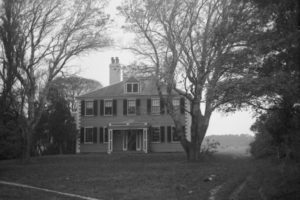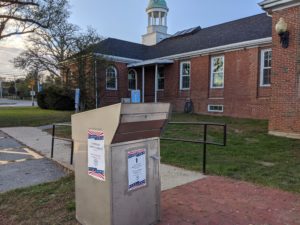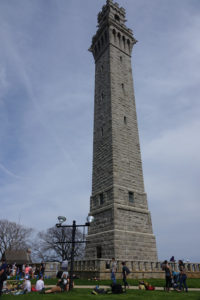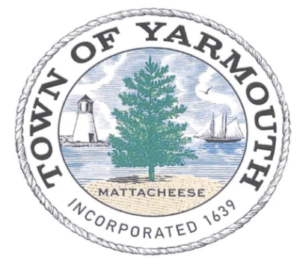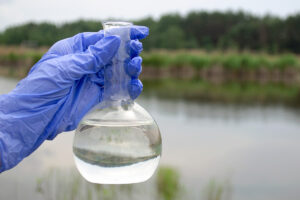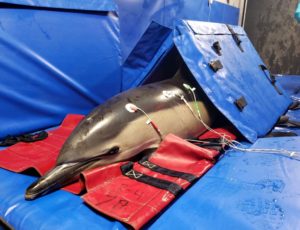CHATHAM – With a coastline known today for its acres of tidal flats, Brewster nevertheless was the village of choice for sea captains during the clipper ship era.
“The peak year of 1850 saw 50 clipper captains living in Brewster,” says Sally Cabot Gunning, a historical novelist and president of the Brewster Historical Society. “If a kid grew up in a town with a maritime crowd, then as soon as he turned 13 he went aboard a vessel. They could stay to farm or fish, but there was more money if you shipped out.”
One of the first to build a fine home from his shipmaster’s proceeds was Brewster native Elijah Cobb, who went to sea as a teen, was captured during the War of 1812, and retired in the early part of the nineteenth century to go back to farming. His house on Lower Road is now home to the Brewster Historical Society.
“Cobb was good friends with many other captains,” says Gunning, whose Brewster ancestors date to the 1660s. “They all knew each other, which is why they may have ended up nearby.”
Their large ships did not sail from Cape Cod, says Gunning. Instead, the captains would take packet ships from a landing off what is now Breakwater Road up to Boston Harbor, and set off for China, Africa and Europe. The town built a stone breakwater parallel to the beach to protect the landing and allow the packet ships to tuck in safely behind.
“The packet to Boston could take anywhere from six hours to two days,” says Gunning. “There are diary entries from captains talking about taking shelter in the ‘horseshoe’ (Wellfleet) or ‘Cape Cod’ (Provincetown) because of bad weather.”
Once they arrived at their vessels in Boston, Brewster captains transported a myriad of items to and from the United States. Their cargo included everything from coffee, coal, coffins, wine, sugar, matches, nuts, oil, ivory, gold, wheat, mahogany, perfume, rum, sandpaper, and of course, fish.
“These ships carried entire small boats and complete houses.” says Gunning. “They would bring ice to the tropics, and transport goods around the Horn from New York to San Francisco. They even brought exotic animals back for PT Barnum.”
One cargo that seemed to be the most troublesome was people. Gunning notes that one sea captain, Winslow Knowles, noted in his log: ‘the passengers have been a great annoyance’.
Ongoing historical discussion speculates as to whether any of the Brewster captains engaged in the slave trade. “If a captain sailed to Africa — for palm oil, gold dust, ivory and coffee — it is almost always asked if he might have also transported slaves, as that was the era for it,” says Gunning. “But no one has ever discovered any definitive proof that any Brewster shipmaster traded in slaves.”
While the clipper ship era populated Brewster with grand captains’ homes, the town had previously enjoyed both a robust herring fishery and a busy whaling industry. “Herring was a very popular food for slaves,” says Gunning, “so herring from Brewster would be shipped off to the West Indies.”
In 1765, Brewster had 12 whaling schooners that left from Point of Rocks. “This was different kind of whaling that took them up and down the coast,” says Gunning. Shore-whaling had long been done on Cape Cod, with small boats being launched when whales were spotted. After the animals were harpooned and dragged ashore, their blubber was rendered in large iron ‘try-pots.’
As the near shore whale population diminished, larger single-masted vessels were constructed and local fishermen, including those from Brewster, traveled up to Newfoundland and along the coasts of Labrador and Greenland. The New Bedford Whaling museum’s Yankee Whaling exhibit explains how the blubber was handled:
“When whales were captured, the blubber would be removed and stored raw in barrels until it could be boiled out on shore. While the cool temperatures of these northern voyages kept the blubber from spoiling, the oil was of a poorer quality than that obtained while the blubber was fresh.”
“Usually the town elders of Brewster would negotiate everyone’s share of the take,” says Gunning. “It was all divvied up professionally. Once the whalers figured out how to set up a tripod on board and render the blubber at sea,” she add, “then they started going out on four-year voyages around the world.”
The Revolutionary War put a temporary stop to all Colonial sea trade, commercial fishing and whaling included. Some Cape Cod locals took part in smuggling along the coast and the British installed the warship Somerset in Cape Cod Bay. In 1778, the ship wrecked off Provincetown, where its remains still sometimes surface as the shore shifts. “My mother is 98 years old, and there are photos of her sitting on its skeleton, when it surfaced at one point,” says Gunning.
Clipper ships ruled the waves in the next century, but their reign came to an end in the late 1860s, when the railroad came to the Cape and the Suez canal opened to allow more direct shipping lanes from Europe to the Far East. “Some of the captains switched to steam ships,” says Gunning, “but many retired from the sea and took up other occupations. Some got involved in the Cape’s cranberry growing business.”
Most of their historic homes are now privately owned, with some serving as bed and breakfast inns. The Captain Freeman House is one, built in 1866 by Captain William Freeman who commanded the vessels Kingfisher, the Maine and the Undaunted. Freeman’s crew on the Undaunted mutinied, and he was wounded, but managed to regain control of the ship, sail it to Nova Scotia and have the mutineers arrested.
“They all had beautiful houses,” says Gunning. “It was a lucrative line of work, but dangerous. Many of them never came back. Charles Hopkins died in Havana, Winslow Knowles in Calcutta.” She describes a beautiful memorial obelisk for Nathan Foster that sits in Lower Road Cemetery, although his body was lost at sea in the South Pacific. “The coal cargo on board his ship spontaneously combusted, a common tragedy, and while much of his crew was rescued and made it safely to Tahiti, his lifeboat overturned.”
Others experienced danger only to survive. “Warren Lincoln first went to sea at 12 year of age,” says Gunning. “He was captured by pirates and then eventually released. Lincoln retired when he was 35; he probably had had enough!”
Sea-going gentlemen of Brewster also made significant achievements, such as Isaac Clark who was the first to sail into Russia’s White Sea, and had to take a sleigh to St. Petersburg to receive his clearance papers — the newly appointed ambassador had not yet arrived from America. Captain Benjamin Freeman logged the second fastest time from Boston to San Francisco, making the journey in 98 days, one shy of the record.
“It was a romantic era,” says Gunning. “These ships could sail at 22 knots, they went everywhere on the globe. They really were the glory of the seas. And many of their shipmasters came home to Brewster.”
By LISA CAVANAUGH, Cape Cod Fishermen’s Alliance




